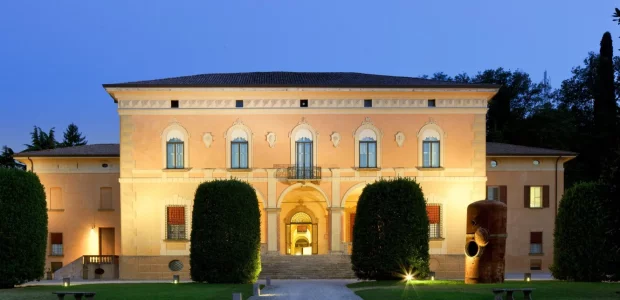
Earning an MBA degree in Europe takes between 10 and 12 months, compared to two years in a US business school. This concise full-time format of the European MBAs has considerable advantages. Below are some of the major pros for studying in European MBAs. They are greatly appreciated by professionals who are committed to making a leap in advancing their career with optimum time and resources.
Intensive learning experience
Although it may seem that one will learn more in two years than in just one, there are many aspects of European MBAs which make the learning experience not only intense, but also comprehensive.
Europe boasts more specialised MBA programmes, focusing on certain specific core competencies and thus make the learning more efficient.
Students in European MBAs may get more individual attention from their professors because classes are smaller, with an average intake of 124 students compared to 287 in US business schools.
Learning from peers in the MBA classroom brings high added value and in this respect European MBAs have the lead. They bring professionals with more experience into class, which improves the level and intensity of the learning experience, the effectiveness of team projects and the potential of networking.
And to bring even more value, the European MBA classes are also more international. As GMAC reports, 38% of participants in US programmes are from foreign countries, while the percentage of international students in European MBAs is 83%.
Optimum expenses
The financial investment in European MBAs is about half, or less, of the budget required for US MBAs. Let’s look at the expenses for some of the top MBAs.
The full-time MBA in INSEAD requires a budget of EUR 62,500 for tuition plus EUR 23,600 for other fees and living expenses – a total of EUR 86,100 for the entire programme. A single on-campus MBA student at Stanford will need, just for the first year, a budget of USD 99,435 (EUR 78,600) for tuition and living expenses which makes over EUR 150,000 for the full MBA programme.
Smarter investment brings a better and faster ROI. This year we can add the positive trends in recruitment of business school graduates registered in Europe. The 2014 Corporate Recruiters Survey Report reveals that “In comparison with recent hiring patterns reported by European employers that reflected the region’s struggling economy, 2014 survey findings bear some bright employment news for graduate business school students.”
Another aspect of full-time studies is that students stay away from the job and subsequently lose income. Clearly, loss of income will be less in a one-year programme, such as most European MBAs are, than if you commit two years to MBA studies.

Accessible merit scholarships
Many MBA students take loans to finance their MBA studies. Professionals bound for European MBAs enjoy favourable circumstances. First they need smaller loans because of the lower cost of European MBAs. Second, they can start repaying their loans sooner, because they will be back to the job a year before their US MBA peers (traditionally in two-year programmes).
Those choosing European MBAs can further reduce their loan requirements because merit based scholarships are more accessible. The GMAT score is often a factor taken into consideration for determining merit-based scholarships. European business schools are more flexible about the GMAT. In 2013, the average GMAT score of the top 10 European MBAs, listed in the Financial Times Global MBA Ranking, was 681, compared to the 30-point higher average score of 711 in the top 10 US MBAs listed in the same ranking.
As the GMAT score is entirely within the control of the test takers, investment in a good GMAT preparation may result in a considerable reduction of the education cost for European MBAs. Many European MBAs can grant scholarships which cover between 30% and 70% of the tuition fees.
Quick return to the market
Professionals who commit to a full-time MBA are motivated by the desire to make a change in their career. They seek to take higher responsibility, to move to a new or international company, to change industry or work in another country or region. Earning an MBA in Europe allows such professionals to reach their goal sooner than if they studied for this degree for two years in the US. Being out of the job market for a shorter period keeps them fit for new employment and up-to-date with the developments in the dynamic world of business. The sooner they land a new job, the sooner they will start getting the return on investment.
Who belongs in European MBAs?
Some of the often quoted advantages of US MBAs (traditionally two years) are related to the internships between the two years, which help land jobs after graduation, the more comprehensive business and management core courses, and the chance to make a career switch during the longer course of study.
All of these are counterbalanced by the fact that European MBAs attract senior professionals. The average age of full-time MBA students in Europe is 30 or more, compared to 27–28 in US business schools. Senior students have more practical experience and do not need that much time in fundamental management courses. In addition, most of these people are accelerating their careers, not changing their careers, and most often know exactly what they want when they join the MBA.
US schools follow the model of European MBAs
Many more US schools are following the model of European MBAs and introducing one-year or accelerated MBAs, than vice versa. One-year MBAs in the USA number more than 50, while two-year MBAs in Europe number less than 10.
D. Wilkins, who joined a one-year MBA in 2013 at Emory University’s Goizueta Business School shares: “I did the math, and the return on investment for the one-year program was much higher than for the two-year program,” he tells the New York Times. You get the exact same benefit as the two-year program — the same professors, the community, the G.B.S. network, all the on-campus resources and Goizueta brand — in less time and for less money.”
The sole advantage of two-year MBAs
Maybe the sole indisputable advantage of the two-year MBAs is the intensity of building relationships and networks. B. Beeken, who opted for Goizueta’s one-year programme, admits that the connections he has made with fellow students have been one of the most rewarding aspects of his MBA experience. He is perhaps only half joking when he second-guesses his decision to take the fast track: “Now I’m almost thinking, maybe I should have done two years so that I could have another year with these people.”
Don’t forget that the intention of our Debate of the Month is to offer you current trends and up-to-date statistics and facts about each topic that we choose. But it is you who will help us determine the winner of each debate! Ask questions below each article and share your opinion because your contribution counts!
Read the opinion of the opponent in “US Two-Year MBA Programmes Are the Real Deal“
Check out all debate topics at American vs European MBAs.


Comments